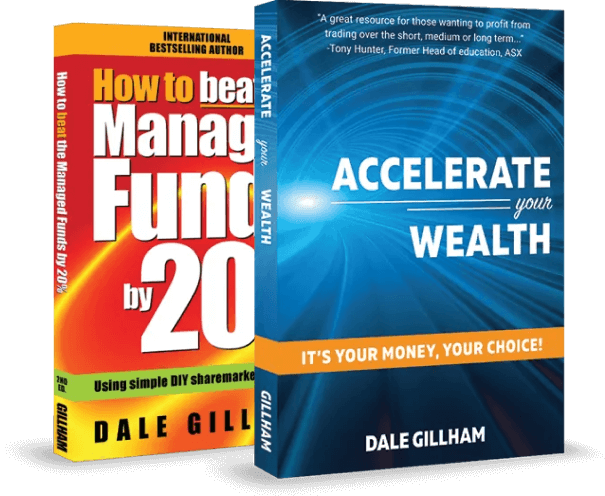The Truth About Inflation and What it Means for Your Portfolio

By Dale Gillham and Fil Tortevski
The Reserve Bank of Australia wants you to believe inflation is under control. But here’s the truth: that number is misleading because every time you pay rent, buy groceries or renew your insurance, it’s getting more expensive and you're not imagining it.
The RBA points to a trimmed mean inflation rate of 2.7 per cent for the June quarter, which is technically inside their 2 to 3 per cent target band. But let’s be real: that number is not the full story. It’s a version of inflation that filters out the biggest price moves, removing the most volatile items to give a “cleaner” average. Let’s break down what that really means.
What is trimmed mean inflation?
The trimmed mean is a version of inflation that cuts out the biggest price rises and falls, essentially filtering out “volatile” items to give what economists call a “core” reading. Sounds smart in theory but in practice, it’s misleading.
For example, if electricity jumps 20 per cent and airfares drop 10 per cent both get excluded, making inflation look calm, even though your bills are rising. Now here's where it gets worse. The RBA is widely expected to cut interest rates in August, possibly bringing the cash rate down to 3.6 per cent. That might sound like relief, but it adds fuel to the fire. Why?
Because housing makes up nearly 22 per cent of the CPI basket. Lower rates could reignite property demand, push prices up and dragging inflation up with it. The very thing that’s supposedly "under control" could be turbocharged by the policy meant to ease it. Meanwhile, the Employee Living Cost Index, which captures household pressure by including mortgage and rent payments, is still running hot.
What does this mean for your portfolio?
There’s now a massive disconnect between the official inflation numbers and what we are experiencing. But in that disconnect lies opportunity for investors who can see through the noise. When inflation stays sticky and the RBA starts easing, certain sectors historically benefit. So, here are 3 sectors and 6 standout stocks to keep an eye on:
1. Finance Sector
Inflation and monetary easing can boost profit margins for insurers and reignite lending demand, such as QBE Insurance (ASX: QBE) where higher insurance premiums and rising costs can improve underwriting margins. While for Commonwealth Bank (ASX: CBA), lower rates could fuel more property lending, helping offset margin compression.
2. Consumer Staples
In tough times, shoppers cut back but not on essentials, instead, they look for value such as, Woolworths (ASX: WOW) whose dominant market position and strong pricing power make it a reliable inflation hedge. While Metcash (ASX: MTS) supplies lower-cost independent stores like IGA, which makes it well placed to benefit from consumers looking for value.
3. Real Estate (REITs & Developers)
Lower rates and rising home prices can support capital gains and income from real estate plays like BWP Trust (ASX: BWP), which includes long leases with Bunnings to provide defensive income and strong tenant backing. Another is Cedar Woods Properties (ASX: CWP) who is a well-positioned developer with exposure to land and housing ready to ride a property rebound.
So, what’s the bottom line. Inflation isn’t dead, it’s just wearing a disguise and while the RBA celebrates these numbers, real-world costs keep marching higher. But instead of fearing it, savvy investors are using this disconnect to their advantage because periods of sticky inflation and interest rate cuts create a powerful setup, one that rewards for those who act early.
What are the best and worst-performing sectors last week?
The best-performing sectors included Materials, up 5.24 per cent followed by Consumer Discretionary, up 3.78 per cent and Real Estate, up 2.89 per cent. The worst performing sectors included Health Care, down 0.97 per cent followed by Industrials, up 0.19 per cent and Financials, up 0.28 per cent.
The best performing stocks in the ASX tops 100 included Northern Star Limited, up 18.17 per cent followed by ID Education, up 17.17 per cent and Lynas Rare Earths, up 16.74 per cent. The worst-performing stocks included Light & Wonder Inc, down 20.17 per cent followed by Telix Pharmaceuticals, down 12.46 per cent and ASX Limited, down 7.57 per cent.
What's next for the Australian stock market?
It’s finally happened, the All Ordinaries Index surged to a new all-time high last week, punching through the 9,000 mark and closing the week 1.79 per cent up. It's a big milestone, especially considering the market was down over 12 per cent back in April. Now, 9,200 points doesn’t seem like a faraway dream anymore and with this current momentum, it’s a reality that could be met by months end.
On the sector front, almost every sector was in the green last week, with Health Care the lone laggard. Miners once again stole the show, and if the Materials sector can break through the 18,000 level this month, it could be the moment that kicks off a true bull run. But with new highs come new risks.
While momentum is strong, the market is starting to look stretched, and this is exactly when sentiment can flip. Plenty of stocks have already made big moves so, this isn’t the time to be piling in blindly. A pullback is highly likely during September or October, and if that happens, watch for opportunities at the next major support level between 8,800 and 8,600 points.
That’s where savvy buyers should show their hand. If they don’t, then that is the signal that the market is preparing itself for a deeper seasonal low, which could take the index down to the 8,400 level.
With that in mind, the smartest move when markets are running hot isn’t to chase momentum, it’s to look for stocks that are building momentum, not the ones that have already taken off. There’s an old market saying that fits perfectly right now: the trend is your friend… until it isn’t.
So, ride the trend while it lasts, but the real skill lies in knowing when to sell, because locking in gains before the music stops is what separates traders who win from those who just get caught holding a falling knife.
For now, good luck and good trading.
Dale Gillham is the Chief Analyst at Wealth Within and the international bestselling author of How to Beat the Managed Funds by 20%. He is also the author of the bestselling and award-winning book Accelerate Your Wealth—It’s Your Money, Your Choice, which is available in all good bookstores and online.






